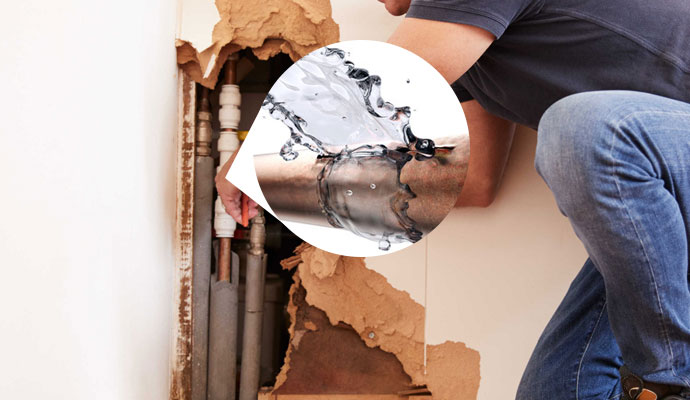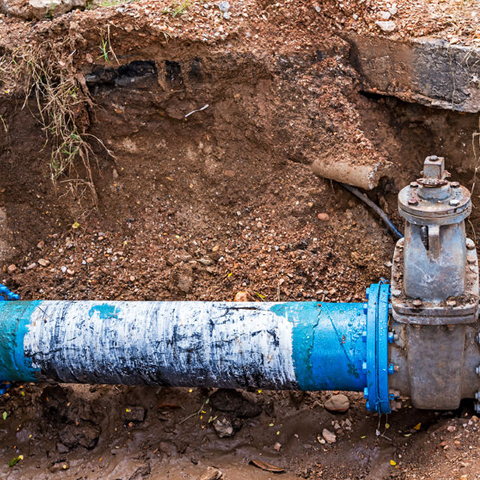We have stumbled on the article involving How to install a dishwasher safely down the page on the net and thought it made good sense to write about it with you on my blog.

A ruptured pipe is a significant emergency; you can just stand as you watch water you pay a lot to reunite with the planet. In worse instances, you discover a swimming pool on your kitchen area floor, which is an excellent trip danger, especially if you have kids around. If the pipeline that burst remained in your walls, trouble: you may require to repaint that whole section.
Exactly how can a calamity like a ruptured pipe be avoided and also handled? Well, by listening to your specialist emergency plumbings and also complying with these regulations.
Exactly how do I know when my pipelines have burst?
Changing water pressures
Pipelines do not just burst in a day. You might have noticed that your cooking area tap or shower does not run instantly when you transform the tap. It may stop for a couple of secs and after that blast you with more pressure than usual.
In various other instances, the water might seem normal in the beginning, then decrease in pressure after a couple of seconds.
Infected water
Lots of people assume a ruptured pipe is a one-way electrical outlet. Quite the contrary. As water spurts of the hole or gouge in your plumbing system, impurities discover their method.
Your water might be contaminated from the resource, so if you can, check if your water storage tank has any issues. However, if your alcohol consumption water is supplied and detoxified by the city government, you need to call your plumber instantly if you see or scent anything funny in your water.
Puddles under pipelines and sinks
When a pipe ruptureds, the outflow develops a pool. It may appear that the pool is growing in dimension, as well as regardless of how many times you wipe the puddle, in a few mins, there's one more one waiting to be cleaned up. Frequently, you may not have the ability to trace the pool to any type of noticeable pipes. This is an indicator to call a professional plumber.
Damp walls as well as water discolorations
Before a pipeline ruptureds, it will leakage, many times. If this persistent leaking goes unnoticed, the leakage may finish into a vast laceration in your pipe. One simple way to prevent this emergency is to look out for damp walls advertisement water stains. These water spots will lead you right to the leakage.
Untraceable dripping sounds
Pipeline bursts can happen in one of the most unpleasant locations, like within concrete, inside wall surfaces, or under sinks. When the house goes quiet, you might be able to listen to an annoyingly relentless dripping sound. Also after you've examined your shower head and kitchen area tap, the leaking might continue.
Precious viewers, the leaking might be coming from a pipeline inside your wall surfaces. There isn't much you can do about that, other than tell a specialist plumber.
Turn up the Warm
Establish fans to blow warm right into cold spaces. Maintain the garage door closed. If you have lowered water flow, warm one of the most prone pipelines (usually in cellars and also crawl spaces or near exterior walls) with a hair clothes dryer. Leave the faucet on while you use warmth. As you melt ice, the circulation will certainly increase. To avoid pipelines from freezing, protect your wall surfaces.
Start Removing the Water
Order the mop, containers and a shop vacuum cleaner to begin to get rid of the water since you absolutely don't want it saturating right into every little thing else in the house. Plus, a fast tidy up will minimize the possibilities of something obtaining musty.
What do I do when I spot a burst pipeline?
Your water meter will certainly continue to run even while your water wastes. To lessen your losses, locate the main controls and turn the supply off. The water mains are an above-ground framework beside your residential or commercial property.
How to Fix & Detect a Leaking Pipe
How Do I Know if a Pipe is Leaking?
Leak detection tests can help you determine if your pipe has a leak. Even if you don’t see an apparent leak, you should still conduct leak detection tests regularly to save water and money—and prevent major damage to your home.
Water meter. It can be helpful to figure out what your usual water meter usage numbers are and then monitor them regularly. To monitor your meter, first, turn off all water faucets in your home. Check the meter and write down the numbers. In a few hours, check the meter again. If the numbers have changed, you have a leak. Water gauge. Use a water gauge to test your water pressure. Your showerhead should produce a certain amount of water pressure based on its model and design. If the pressure is lower than it is supposed to be for that specific showerhead, your home likely has a leak. Puddles. Look inside your bathroom, laundry, and kitchen sink cabinets. Puddles around the cabinets or around toilets, tubs, showers, and washing machines indicate the presence of a leaking pipe. You may also notice loose tiles, peeling or flaking paint, or mold caused by water accumulation. Napkin test. Even if you don’t see any puddles, you may still have a leak. You can test for water leaks in the bathroom, laundry, and kitchen by wiping below-sink connections with a napkin, paper towel, or piece of toilet paper. If it becomes damp, you probably have a leaking pipe under the sink. Discolored walls. Walls that are discolored—usually with brown or yellow stains—or bulging might mean that they have been impacted by water damage caused by a leaking pipe. Smell. A leaky pipe will create sitting water, and over time, that water may develop a musty smell. If your home smells musty, but you can’t locate the source, it may be due to a leak. Steps for Fixing a Leaking Pipe
A leaky drain can be remedied by tightening the pipe base, replacing the drain seal, caulking the rim, and tightening the pipe nut. Similarly, a leaking toilet pipe can be treated by tightening the packing nut. You may also need to replace the valve. A leaky faucet may just need tightening or replacement of the washers. If that doesn’t work, consider replacing your faucet. If your pipe has a hole in it, you may want to use a pipe leak sealer or pipe leak tape. This quick fix for water pipe leaks can also temporarily fix a copper pipe leak. https://www.ahs.com/home-matters/quick-tips/how-to-tell-if-pipes-are-leaking/

I'm very inquisitive about What to Know Before Installing a Dishwasher and I am hoping you liked the article. Enjoyed our entry? Please share it. Help someone else discover it. Thank-you for taking the time to read it.
Check This Out